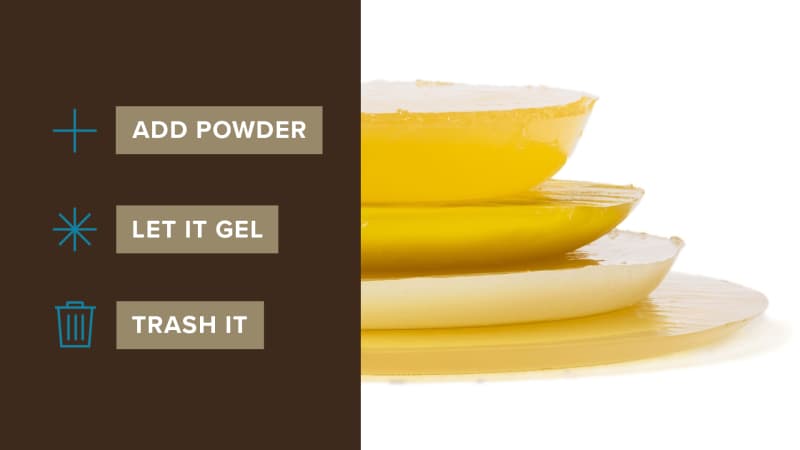You probably don’t hear this a lot, but there are some really compelling reasons to fry your food.
How to Dispose of Cooking Oil Without Making a Mess or Ruining Your Drain
Published Apr. 6, 2024.

For one thing, it’s a highly efficient way to cook. Plunging food into hot oil exposes its entire surface to heat, so it cooks through quickly and uniformly. And of course the results are delicious. Oil can get really hot and thoroughly drive off food’s moisture, concentrating its flavor, building up crispness, encouraging browning, and adding richness. Plus, when you do the frying yourself, you get to eat the food at its hottest, crispiest best. Just imagine the looks on your friends’ faces when you present them with still-warm doughnuts and audibly crunchy chips.
If there’s a part that gives you pause, I’m guessing it’s the cleanup; dealing with hot, spent oil sounds daunting and messy. But the good news is that oftentimes you can strain and reuse it—many times over.
And when the oil is truly spent, I’ve got a couple tips for how to dispose of it properly. One solution even transforms liquid oil into a solid gel that you can just toss into the trash (some commercial composting services may accept waste oil; check with your local company). I’ve also got tips for how to dispose of animal fats such as bacon grease and schmaltz.
Sign up for the Cook's Insider newsletter
The latest recipes, tips, and tricks, plus behind-the-scenes stories from the Cook's Illustrated team.
Can You Reuse Frying Oil?
In many cases, yes!
After running side-by-side tests with fresh versus spent oil that we used to fry chicken and potato chips, we concluded that with breaded and battered foods you can clean and reuse oil three or four times. With cleaner-frying items such as potato chips, it’s fine to reuse oil at least eight times—and likely far longer, especially if you’re replenishing it with some fresh oil.
We even evaluated the oil using a kit that turns the oil from blue to green in the presence of certain compounds that indicate degradation. Check out the results, plus more information about reusing spent frying oil, here.
The only time you need to throw out the oil is if it was used to fry fish, or if it turns brown, smokes easily, or has a greasy odor.
How to Dispose of Cooking Oil
Let’s be clear about one thing: Never, ever pour cooking oil down the drain. Even just a little oil at a time will build up in your pipes, clogging them and eventually causing serious drainage issues.
Here are several good ways to properly dispose of cooking oil:
Easiest Way: Waste Cooking Oil Powder
If you can plan ahead, waste cooking oil powder makes oil cleanup a snap. Stir a sachet of these small white flakes into a pot of warm oil, and as they cool the contents will transform into a solid disk that is easy to remove from the pan and dispose of in the compost or trash—no container needed.
The science behind the transformation is oleogelation. The product interacts with the liquid oil, much like gelatin in water, to create an oleogel. A fairly recent development in food science, oleogelation immobilizes liquid oil in a matrix of crystalline fat so that it behaves like a solid.
Instructions:
The products we tested worked identically to solidify separate batches of corn, canola, and peanut oil. They were portioned into individual 18-gram (about ⅔-ounce) sachets that claimed to solidify 2½ cups of oil.
- Heat the oil to about 175 degrees Fahrenheit (you want it warm enough to thoroughly melt the waxy product).
- Stir the contents of an individual sachet into the oil until the powder is dissolved.
- Allow the mixture to cool until solidified, about 1 hour.
- Use a spatula to help lift the solidified disk from the pan, and toss in the trash.
Watch Cook’s Illustrated Editor in Chief Dan Souza demonstrate how the powder works.
Other Alternatives:
Before using any of these methods, make sure the oil is cool.
Triple Layer of Plastic Bags
Transfer the oil to a triple layer of plastic shopping bags, securely tie the top, and dispose of it in the trash. Of course, you want to be sure that nothing in or added to the trash punctures the bag of oil.
Empty Container with a Lid
Pour the oil into a lidded container that you were going to throw out anyway, such as an empty milk carton.
Trash Can
When you’re discarding a small amount of oil, you can pour it directly in the trash if there is an ample layer of paper goods and/or food scraps to absorb the oil.
How to Reuse or Dispose of Bacon Grease and Other Animal Fats
Leftover animal fats are flavor-packed gold for dishes such as fried potatoes and matzo ball soup. When their fatty acids are exposed to heat, they oxidize to form new flavor compounds that actually improve flavor and make it taste more complex. And if you haven’t had a bacon-washed cocktail, you should.
Plus, animal fats freeze beautifully, so they’re easy to keep on hand.
When you do want to throw them out, it’s no big deal because they’re solid at room temperature. Simply wait for them to cool and solidify and then scrape them into the compost (if eligible) or trash.






